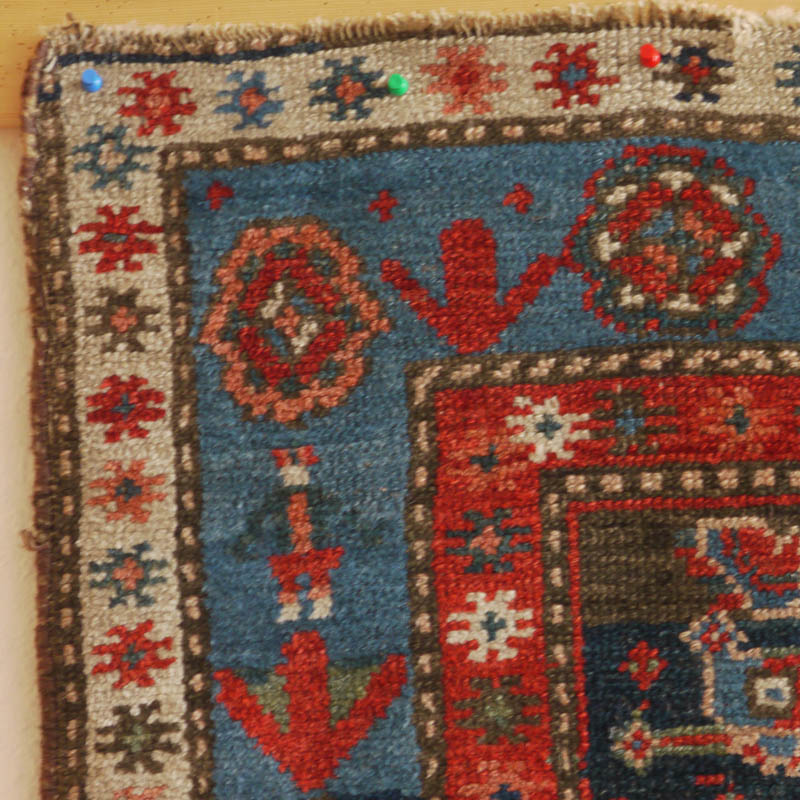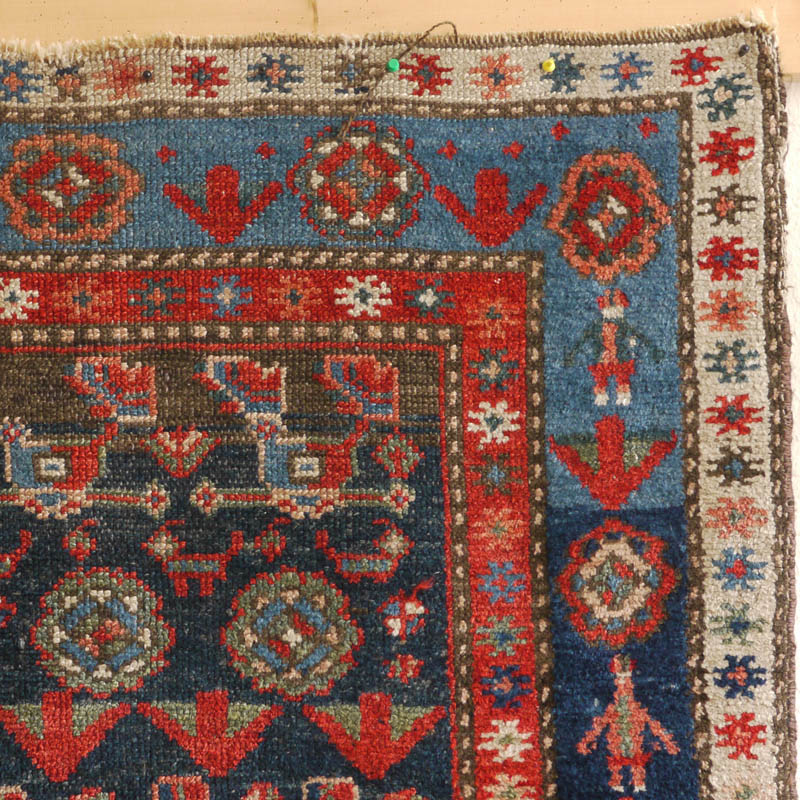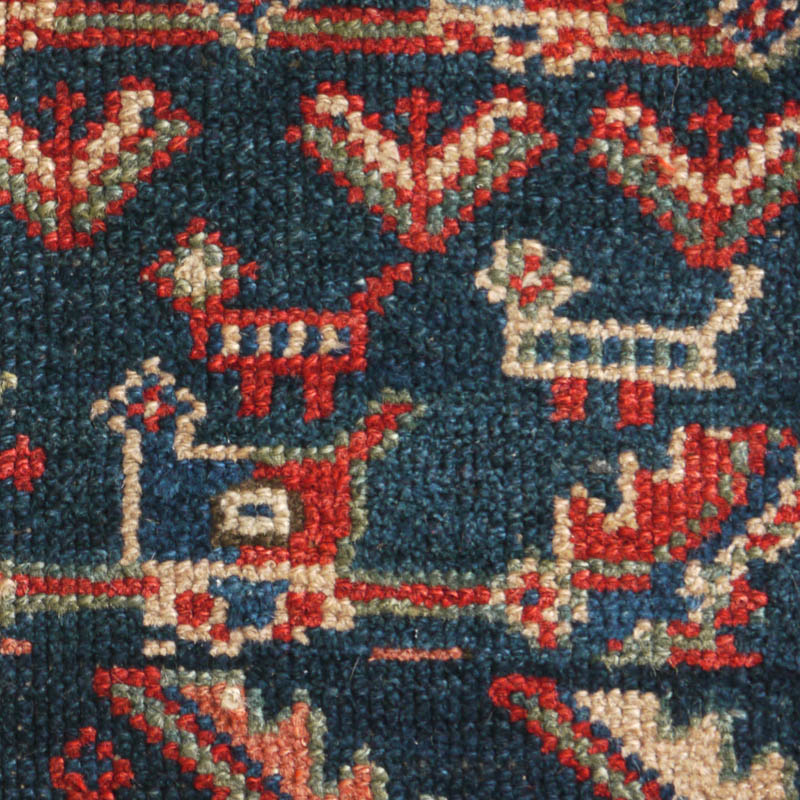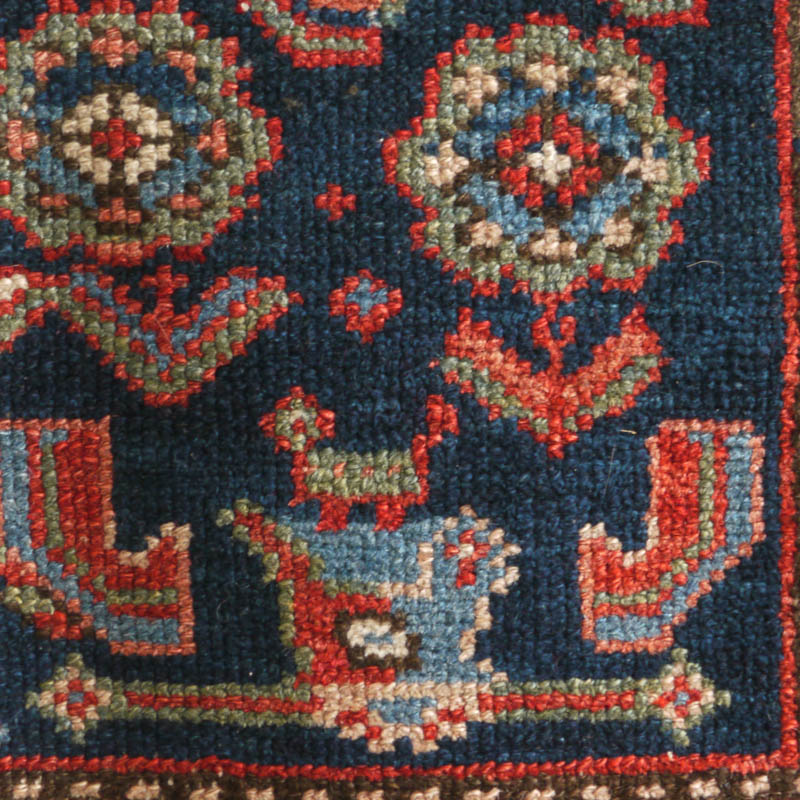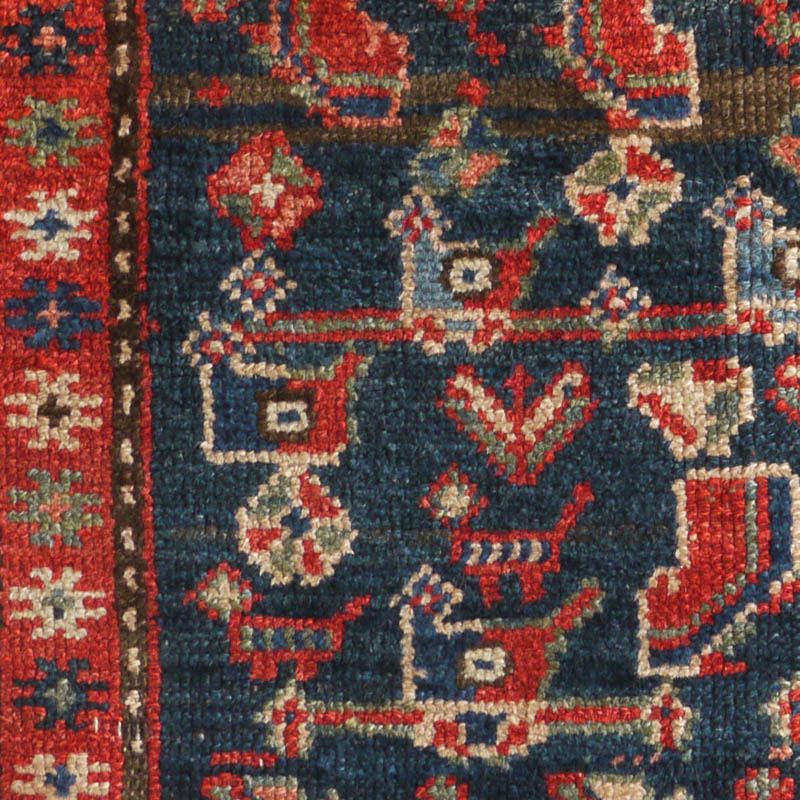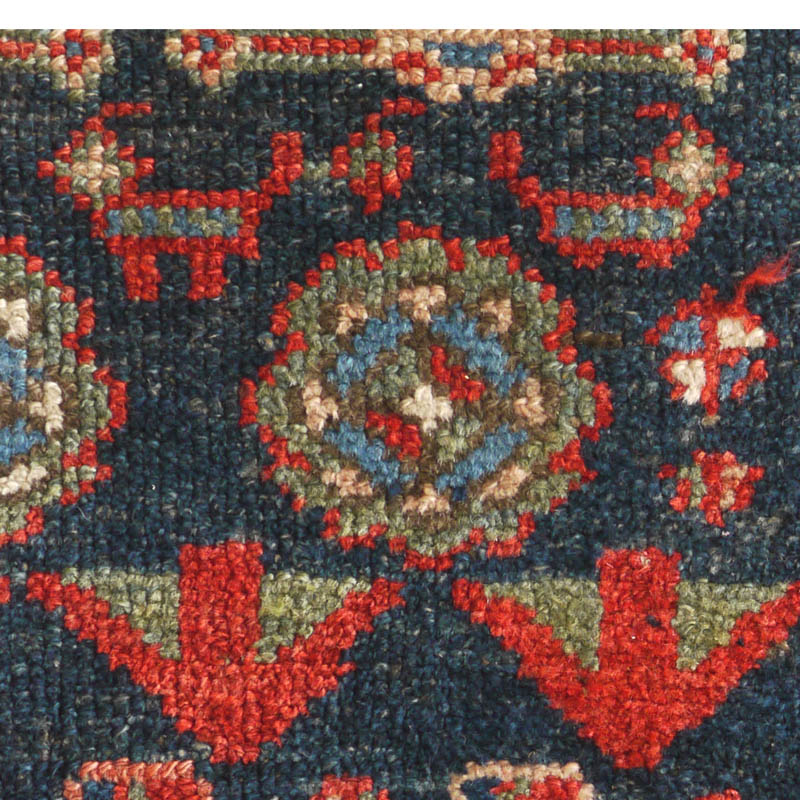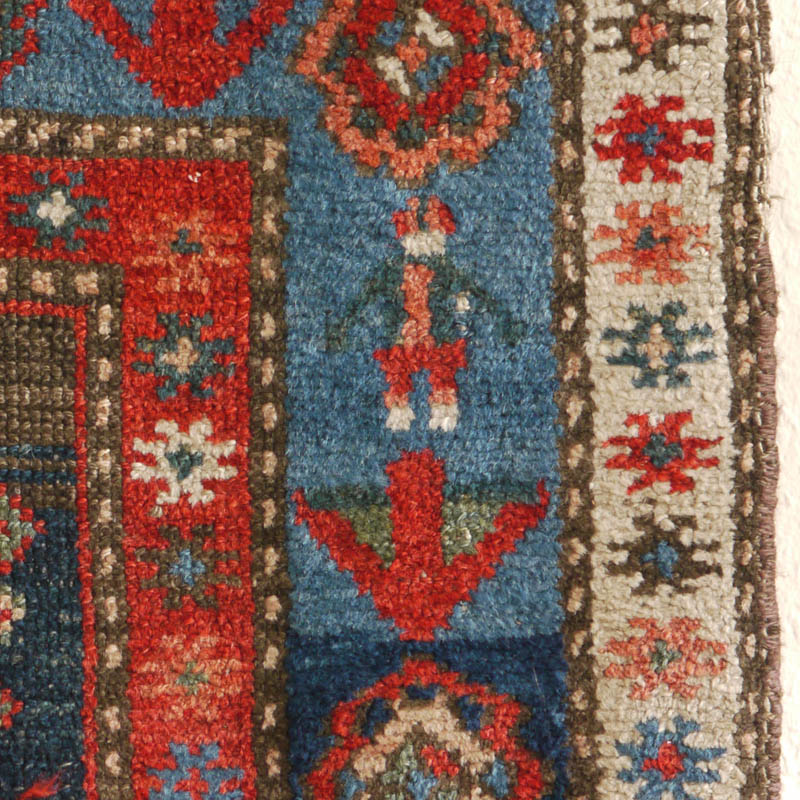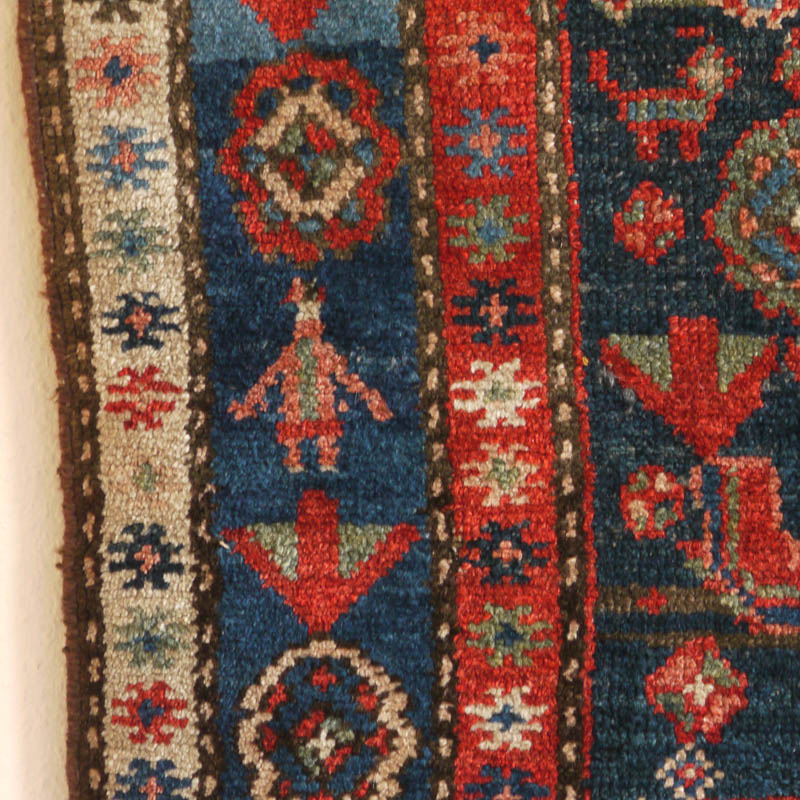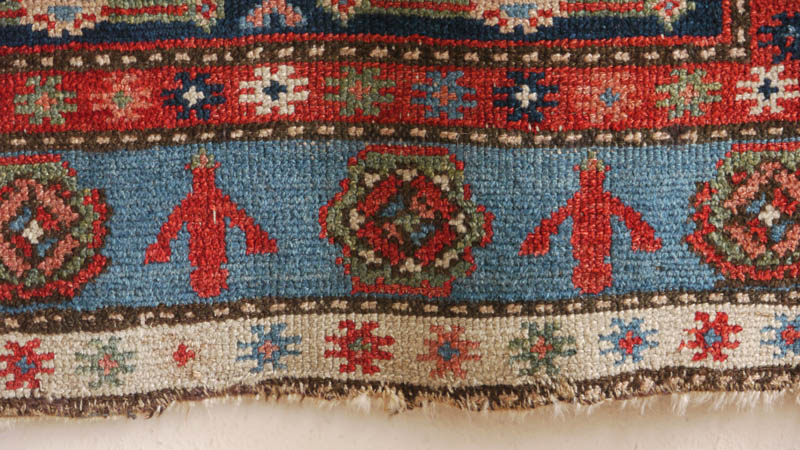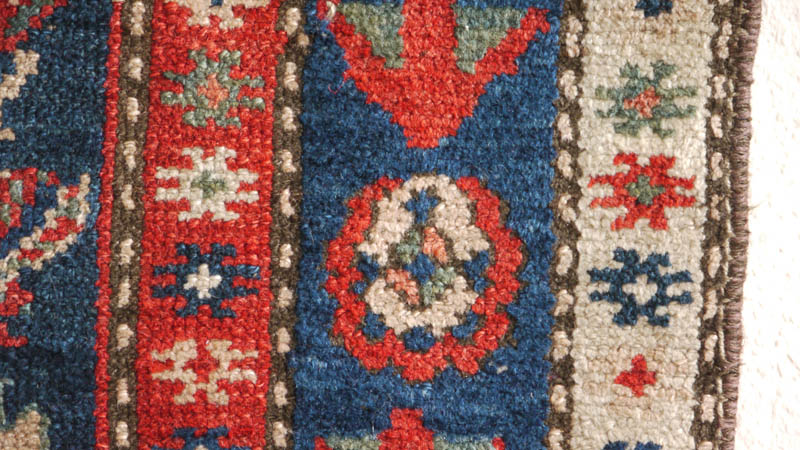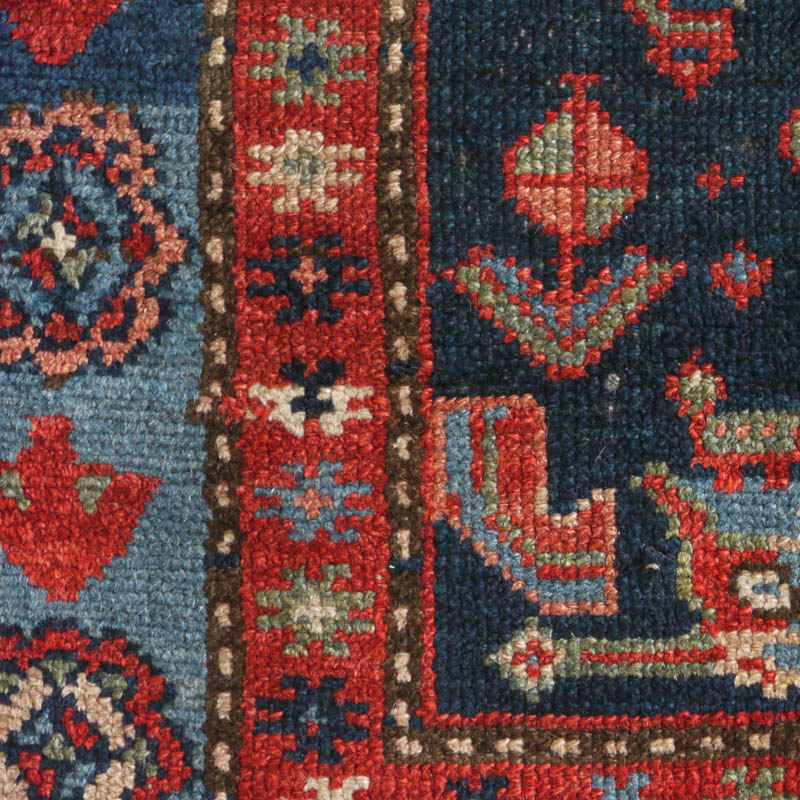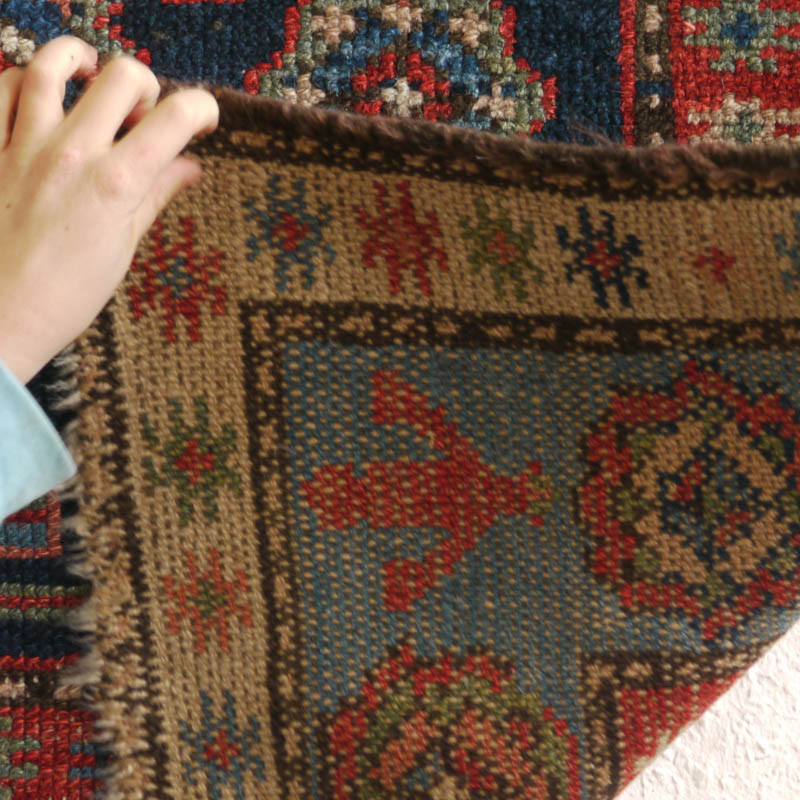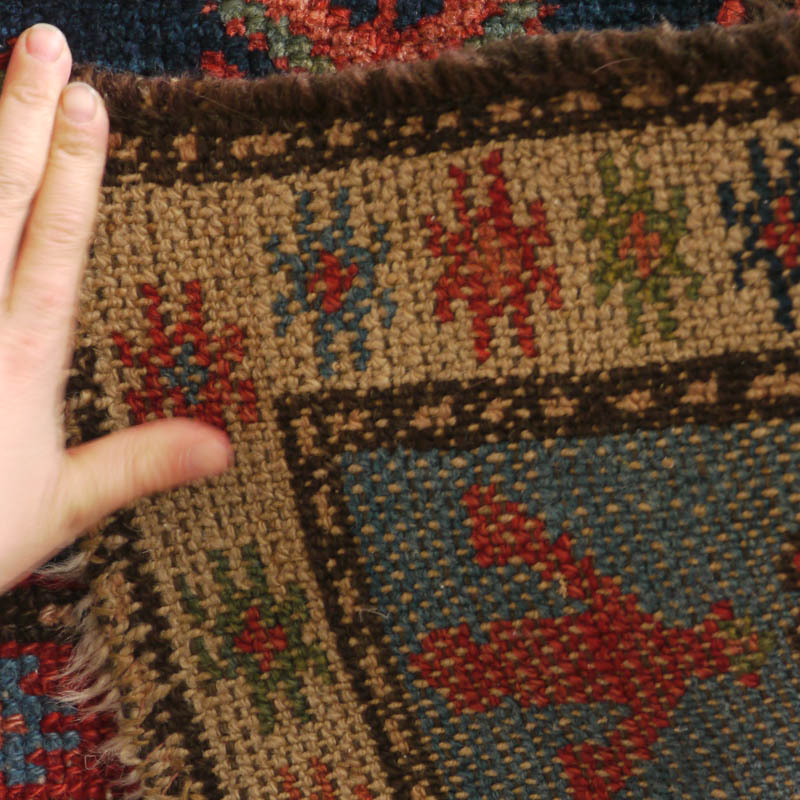Given the all-wool construction and the basket weave, this rug may be best attributed to the Kolyai area west of Hamadan, Persia. It could well date back into the 19th centrury, but nomads would probably have used woolen foundations longer than village weavers. Whether it actually was Kolyai Kurds that wove the rug or some other Kurdish tribe is impossible to ascertain. The small size and the whimsical design point to a nomadic origin or to a piece that was never intended for the market. The appearance of humans in the borders may be taken to support that, giving the rug a somehow personal or private character.
A lot of different things are packed row by row into this little rug. Most charming perhaps are the birds (ducks?) which seem to be depicted swimming, their bellies below the water line. The waterline itself is constructed by a horizontal bar ending in small diamonds. Near the centre of the rug, these bars have merged to what may be interpreted as a continuous water line.
Right above the bottom two rows of ducks , little mammals are placed (they look a bit as if they were riding the ducks). They have dotted or striped bodies, diamond heads, and tails pointing merrily upwards. Other quadrupeds in the field have ramshorns, so I guess these are goats.
Then we have rows of flowers with big concentric blossoms, short stems and flanking leaves. There is a row of an arrow motif (pointing downwards, cavities filled green). The motif resembles the lower part of the flowers (notice however that the motif fails to match the blossons in the upper third of the field). Apart from that, the arrow motif is an important element of the primitive but effective main border.
Also featuring are serrated leaves based on the sickle leaf motif that prominently feature in the herati design. Further up the field, these leaves become quite chunky and less serrated.
In the spaces in-between, we find some extra birds and small rosette motifs strewn across the field.
One striking feature of this rug is the unusual main border with alternating rosettes and arrow shapes, which includes several humans (four, to be precise). Interestingly, the arrow shapes of the lower main border are upside-down. This way, they strongly resemble the human outline, even the heads seem indicated in a small green-and-pink triangle absent in the other arrow shapes.
Both minor borders carry a simple star motif in alternating colours, as if they were not meant to distract from the dramatic main border. Narrow brown 'stich'-pattern stripes flank both minor borders.
The rug is quite small: 5ft. x 3ft.7in. (152 x 111 cm). Structurally the weave is similar to Hamadan, relatively loose, non-depressed, with symmetrical knots and single weft. Warps and wefts are wool (warps are off-white, wefts are brown-grey). The weave is coarse, the horizontal knot count is h.23/10, the vertical knot count is v.23/10, which means 529 knots/dm2 (or, converted to to inches, h.6,v.6 = ca. 36 kpsi) This results in a V/H ratio of 1. Fat single cord selvage wrapped in brown wool (probably rewrapped at some point). On the backside, the appearance is of a very regular basket weave showing the warp spots (see backside image). The knots themselves show strongly twisted pile wool as in Senneh rugs, the touch is a bit grainy, though not much (has flattened out due to age, I guess). The handle is floppy.
Fair condition for the age, generally short pile close to knotheads, but nowhere bare. Structurally sound. The ends show a hint of loss here and there, they need securing. The top right selvedge and the selvedge at the lower left corner could do with some rewrapping. No rot, tears, holes, or stains that I could detect. Reasonably clean, may benefit from a gentle wash.
A limited but beautiful all-organic palette. There are several shades of nicely abrashed indigo blue and several shades of madder red: a saturated red, a lighter rose shade, and a very light rose which is difficult to discern on the tan white background of the outer minor border where it is used in some of the simple star motifs. Also prominent is a lovely clear green mainly used in the large flowers. Another darker teal green is used sparingly, for example, for the jacket of the human figure in the top left main border. Then there is off-white of the outer border and used also in the flowers, leaves and for outlining of some motifs. At the very top of the field and across the central area, the dark indigo background gives way to dark olive brown: probably the dyer had run out of indigo.
